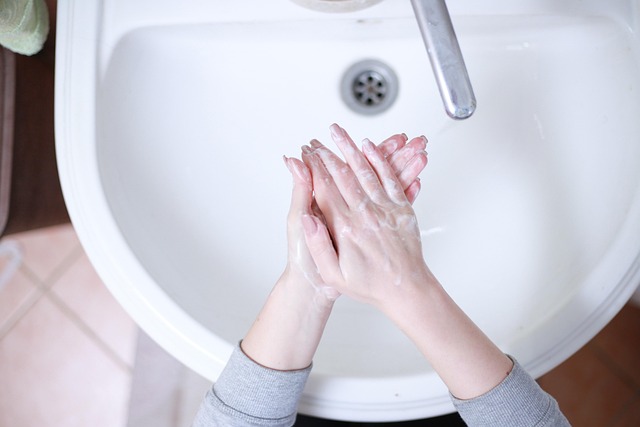When designing a sustainable bathroom, LED bathroom lighting is a crucial eco-friendly choice. These energy-efficient lights reduce electricity consumption and carbon footprints with lower heat output and adjustable brightness. Recessed, pendant, and wall-mounted fixtures offer aesthetic appeal while saving energy and water, making them ideal for environmentally conscious bathroom remodeling.
Looking to transform your bathroom into a sustainable oasis? We’ve got you covered! This guide unveils customized plans for creating an eco-friendly, luxurious, and water-efficient space. From energy-saving LED bathroom lighting that reduces your carbon footprint to smart technology enhancing convenience and efficiency, we explore innovative solutions. Discover the latest trends in LED bathroom lighting options—recessed, pendant, or wall-mounted—all while minimizing environmental impact. Learn about low-flow fixtures, greywater recycling, and sustainable materials, plus the benefits of integrating smart technology for a truly modern, eco-conscious bathroom makeover.
- Choosing Eco-Friendly LED Bathroom Lighting
- – Discussion on energy efficiency and environmental impact of LED lights
- – Types of LED bathroom lighting options (recessed, pendant, wall-mounted) and their advantages
- Designing a Water-Conserving Bathroom
Choosing Eco-Friendly LED Bathroom Lighting
When designing a sustainable bathroom, one of the key areas to consider is lighting. Opting for eco-friendly LED bathroom lighting is an excellent way to reduce energy consumption and create a bright, efficient space. LED lights are highly energy-efficient, lasting much longer than traditional incandescent bulbs, which significantly reduces waste over time. They also produce less heat, making them safer in humid bathroom environments.
Choosing the right LED lighting for your bathroom involves selecting fixtures that offer adjustable brightness and color temperature settings to suit various tasks. Warm white or soft yellow tones are ideal for relaxing evening routines, while cooler light temperatures can enhance morning productivity. Many modern LED fixtures also come with motion sensors, ensuring lights automatically turn off when not in use, further conserving energy.
– Discussion on energy efficiency and environmental impact of LED lights
LED bathroom lighting is a smart choice for those looking to create an eco-friendly and energy-efficient space. These lights offer significant advantages in terms of sustainability compared to traditional options. Not only do LED bulbs consume far less electricity, but they also have a much longer lifespan, reducing the need for frequent replacements. This means lower energy costs and fewer waste products ending up in landfills.
Additionally, LED bathroom lighting minimizes environmental impact due to its reduced carbon footprint. Unlike incandescent bulbs, LEDs generate minimal heat, which not only makes them more efficient but also contributes to a cooler bathroom environment, potentially reducing cooling costs. The long-lasting nature of these lights also extends to their color consistency, ensuring your bathroom stays illuminated with the desired ambiance without frequent adjustments or replacements.
– Types of LED bathroom lighting options (recessed, pendant, wall-mounted) and their advantages
When designing a sustainable bathroom, choosing the right LED bathroom lighting is essential for both aesthetics and energy efficiency. Recessed LED lights are a popular choice due to their seamless integration into ceilings, offering uniform illumination across the space. This type is ideal for creating a clean, modern look while also being highly efficient, as they produce minimal heat and consume less energy compared to traditional lighting.
Pendant and wall-mounted LED fixtures provide flexible options for specific areas within the bathroom. Pendant lights, hanging from the ceiling, can add a stylish touch over vanity mirrors or tubs, offering task lighting without overwhelming the space. Wall-mounted options are versatile, suitable for accenting walls or providing ambient lighting along hallways. These installations not only contribute to energy savings but also enhance the overall sustainability of the bathroom by reducing carbon footprint and waste, making them an excellent choice for eco-conscious remodeling projects.
Designing a Water-Conserving Bathroom
Designing a water-conserving bathroom involves smart choices that don’t compromise on style or functionality. Start with low-flow fixtures, such as water-efficient showerheads and faucets, which significantly reduce water usage without sacrificing performance. Install a dual-flush toilet to allow for half-load flushing, saving precious H2O for essential tasks. Additionally, consider incorporating LED bathroom lighting, which not only reduces energy consumption but also provides a bright, eco-friendly illumination that’s kind to the environment.
To further enhance water conservation, opt for a shower system that combines steam and rain modes, allowing you to switch between luxurious soaking and targeted watering. Efficient flooring options, like ceramic tiles or recycled vinyl, also contribute to sustainability by reducing the need for excessive watering outside the bathroom. These thoughtful designs transform your space into a sustainable oasis, demonstrating a commitment to preserving our planet’s most precious resource.
Transforming your bathroom into an eco-friendly oasis is achievable through strategic choices. By adopting custom LED bathroom lighting, you not only reduce energy consumption but also contribute to a greener planet. The versatility of LED fixtures, from recessed lights to elegant pendant designs, ensures both functionality and style. Additionally, implementing water conservation strategies, such as low-flow faucets and efficient showerheads, makes your bathroom a sustainable sanctuary. These simple yet effective changes prove that creating an eco-conscious space is accessible and aesthetically pleasing.
